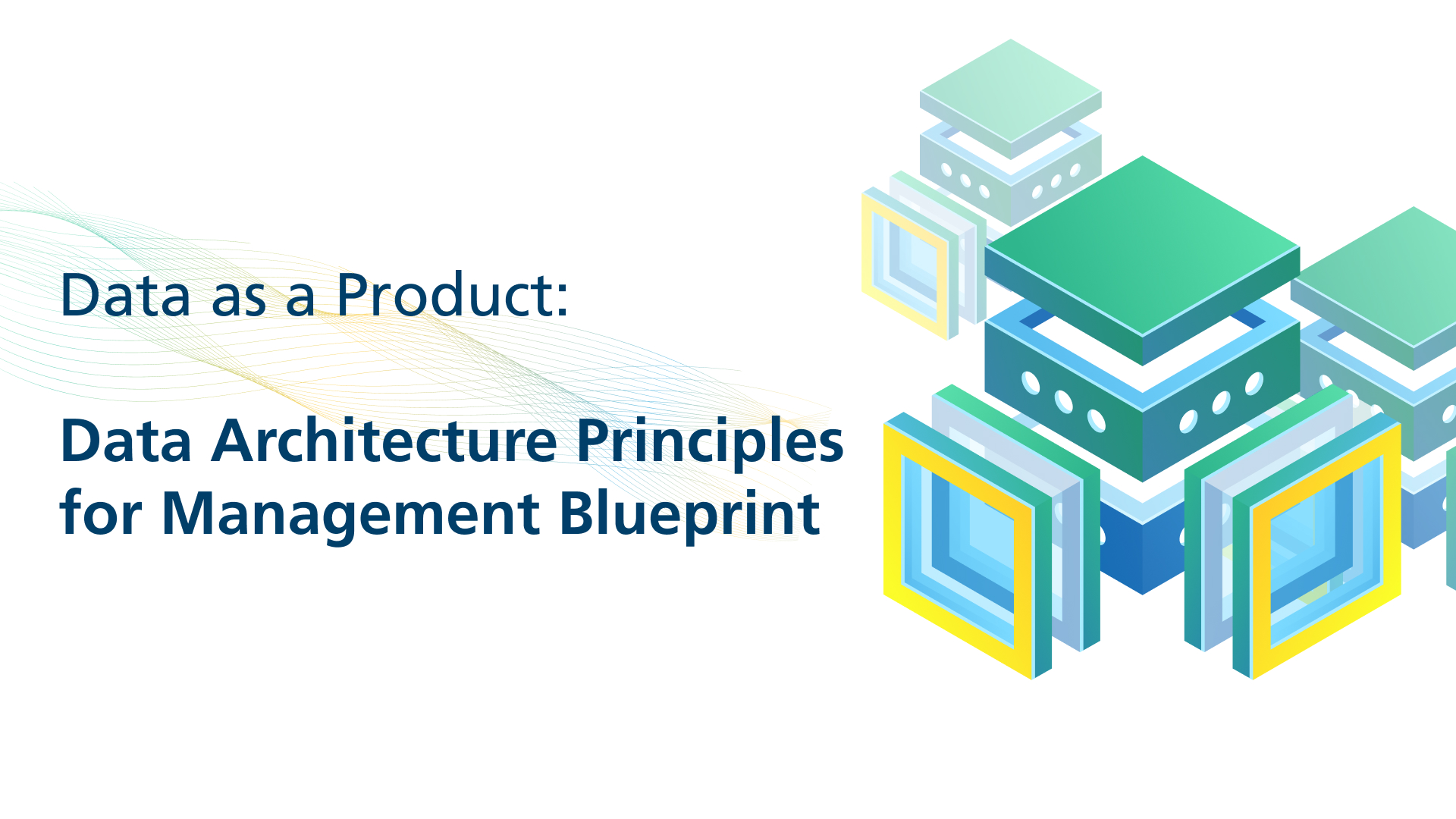In today’s work, the goal of every organization is to ensure that data is managed properly which meets their business needs for information and more. Hence, they invest to create strong data architecture, which is a discipline that documents an organization’s data assets, maps how data flows through its systems, and provides a blueprint for managing data.
While data architecture can support operational applications, its output includes a multilayer framework for data platforms and data management tools, as well as specifications and standards for collecting, integrating, transforming and storing data. It most prominently defines the underlying data environment for business intelligence (BI) and advanced analytics initiatives.
Ideally, data architecture design is the first step in the data management process. But that usually isn’t the case, which creates inconsistent environments that need to be harmonized as part of a data architecture. Also, despite their foundational nature, data architectures aren’t set in stone and must be updated as data and business needs change. This makes them an ongoing concern for data management teams. Data architecture goes hand in hand with data modeling, which creates diagrams of data structures, business rules and relationships between data elements. They’re separate data management disciplines, though. This article on data architecture further explains what it is, why it’s important and the business benefits it provides.
Evolution of data architectures
In the past, most data architectures were less complicated than they are now. They mostly involved structured data from transaction processing systems that were stored in relational databases. Analytics environments consisted of a data warehouse, sometimes with smaller data marts built for individual business units and an operational data store as a staging area. The transaction data was processed for analysis in batch jobs, using traditional extract, transform and load (ETL) processes for data integration.
Starting in the mid-2000s, the adoption of big data technologies in businesses added unstructured and semi-structured forms of data to many architectures. This led to the deployment of data lakes, which often store raw data in its native format instead of filtering and transforming it for analysis upfront – a big change from the data warehousing process. This new approach started driving wider use of ELT data integration, an alternative to ETL that inverts the load and transform steps.
The increased use of stream processing systems has also brought real-time data into more data architectures. Many architectures now support artificial intelligence and machine learning applications too, in addition to the basic BI and reporting driven by data warehouses. The shift to cloud-based systems further adds to the complexity of data architectures.
Another emerging architecture concept is the data fabric, which aims to streamline data integration and management processes. It has a variety of potential use cases in data environments.

Why are data architectures important?
A well-designed data architecture is a crucial part of the data management process. It supports data integration and data quality improvement efforts, as well as data engineering and data preparation. It also enables effective data governance and the development of internal data standards. These two things, in turn, help organizations ensure that their data is accurate and consistent.
A data architecture is also the foundation of a data strategy that supports business goals and priorities. In an article on key data strategy components, Donald Farmer, Principal of Consultancy – TreeHive Strategy, wrote that “a modern business strategy depends on data”. This makes data management and analytics too important to leave to individuals, Farmer said. To manage and use data well, an organization needs to create a comprehensive data strategy, underpinned by a strong data architecture.
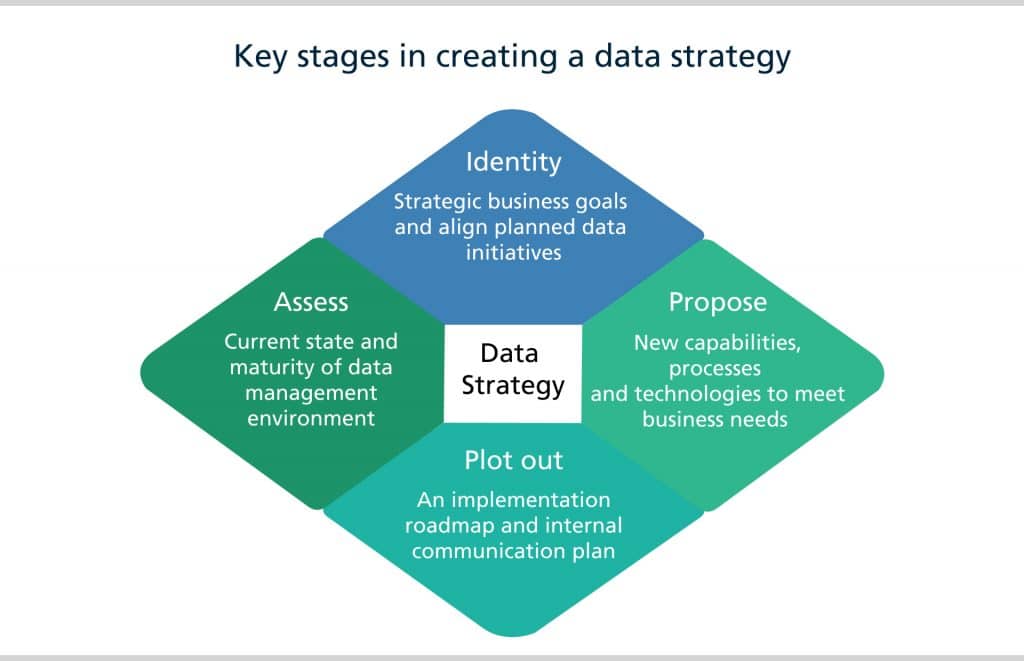
What are the characteristics and components of a data architecture?
As per principles of modern data architectures, it is important to include both data governance and regulatory compliance processes and the growing need to support multi-cloud environments. As per our observation, data’s potential business value will be wasted if a data architecture doesn’t make it available for analytics uses. It’s a cliché of modern data management that data is a business asset, we know that data that just sits idle is only a cost center, requiring maintenance without providing any business benefits.
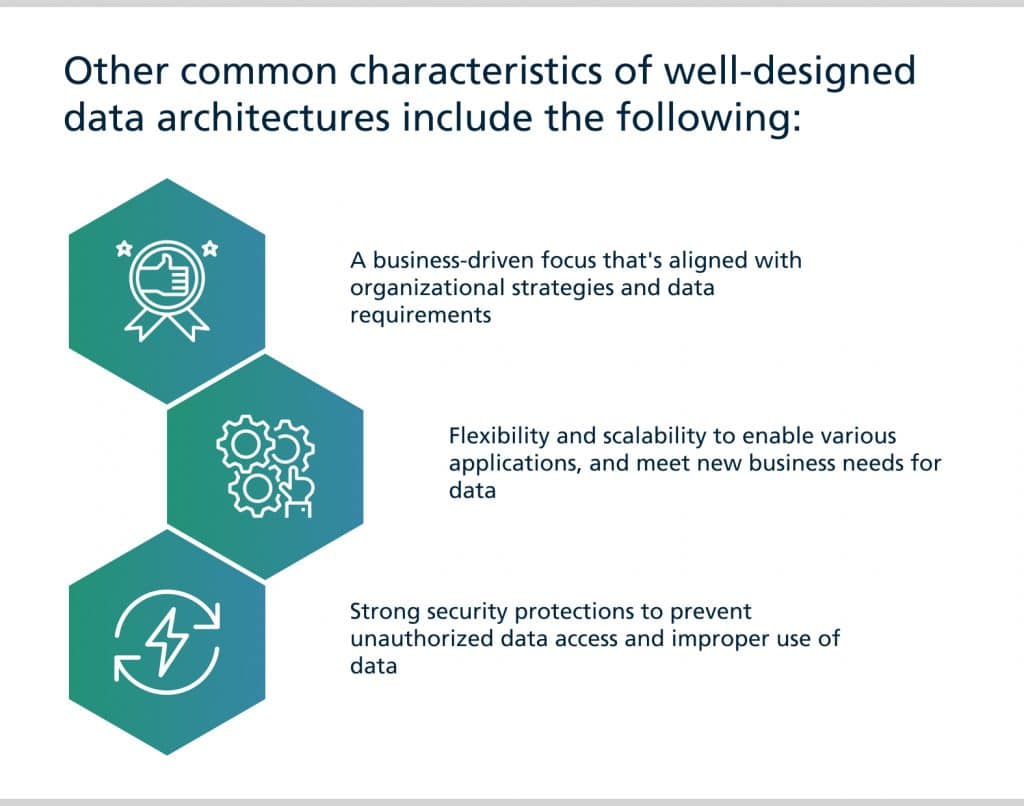
From a purist’s point of view, data architecture components don’t include platforms, tools and other technologies. Instead, a data architecture is a conceptual infrastructure that is described by a set of diagrams and documents. Data management teams then use them to guide technology deployments and how data is managed.
Some examples of those components, or artifacts, are as follows:
- data models, data definitions and common vocabularies for data elements
- data flow diagrams that illustrate how data flows through systems and applications
- documents that map data usage to business processes, such as a CRUD matrix – short for create, read, update and delete
- other documents that describe business goals, concepts and functions to help align data management initiatives with them
- policies and standards that govern how data is collected, integrated, transformed and stored
- a high-level architectural blueprint, with different layers for processes like data ingestion, data integration and data storage
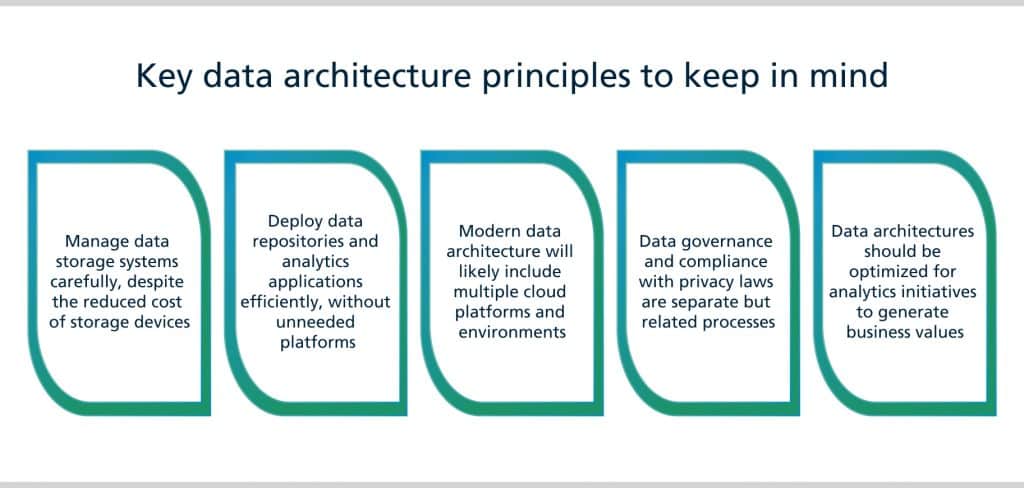
What are the benefits of a data architecture?
Ideally, a well-designed data architecture helps an organization develop effective data analytics platforms that deliver useful information and insights. In companies, these insights improve strategic planning and operational decision-making, potentially leading to better business performance and competitive advantages.
Data architectures also aid in various other applications, such as the diagnosis of medical conditions and scientific research. Also, it helps in improving data quality, streamline data integration and reduce data storage costs, among other benefits. It does so by taking an enterprise view compared to domain-specific data modeling or focusing on architecture at the database level.
Well-constructed data architecture can offer businesses several key benefits, which include:
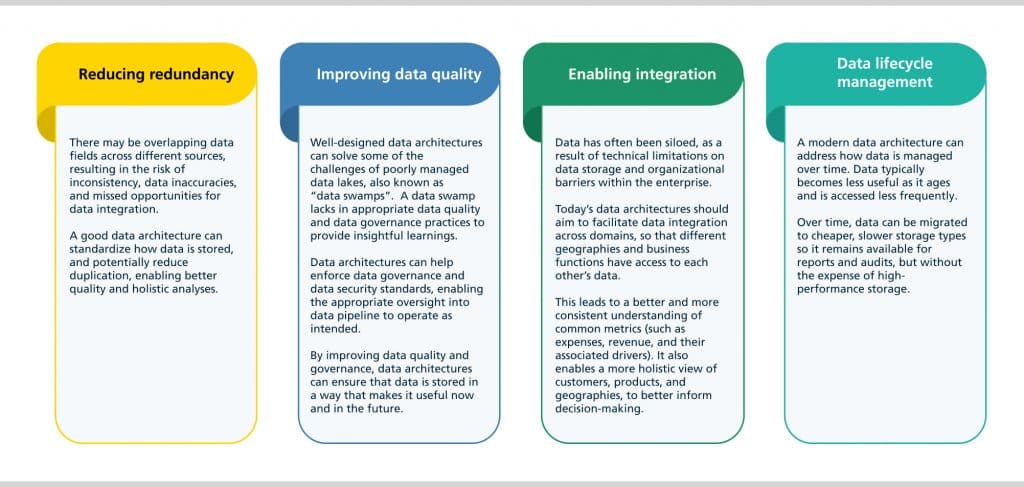
What are the risks of bad data architecture design?
One data architecture pitfall is too much complexity. The dreaded ‘spaghetti architecture’ is evidence of that, with a tangle of lines representing different data flows and point-to-point connections. The result is a ramshackle data environment with incompatible data silos that are hard to integrate for analytics uses. Ironically, data architecture projects often aim to bring order to existing messy environments that developed organically. But if not managed carefully, they can create similar problems.
Another challenge is getting universal agreement on standardized data definitions, formats and requirements, without which, it’s hard to create an effective data architecture. The same goes for putting data in a business context. Done well, data architecture ‘captures the business meaning of the data required to run the organization’. But, failing to do so may create a disconnect between the architecture and the strategic data requirements it’s supposed to meet.
Read more in the subset of this blog – Role of Data Architecture and Data Modelling Strategy, as we go into details of data architecture, crucial in supporting operational applications, defining the underlying data environment for business intelligence (BI) and advanced analytics initiatives, and creating effective data governance and internal data standards. Learn how a well-designed data architecture aids in developing effective data analytics platforms that deliver useful information and insights, improves strategic planning, and operational decision-making, among other benefits.
